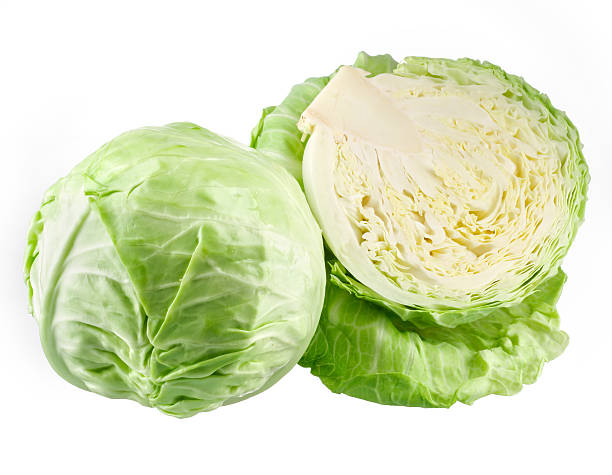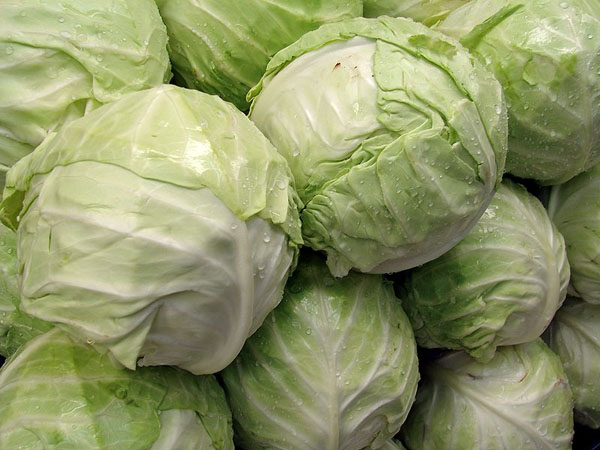This biennial plant belongs to the cruciferous family. White cabbage is grown everywhere. She is one of the five most popular food products and occupies one of the leading positions in vegetable growing. The nutritional value of cabbage is unique, which makes it indispensable in dietary and therapeutic nutrition.
Description of appearance and grade
This hygrophilous and photophilous plant is most often planted using seedlings. The most favorable place for planting will be beds on which cucumbers, beans, peas or potatoes previously grew.
- The leaves of this vegetables are tight to each other, forming a basal rosette.
- The color of leaves can vary from bright white to saturated green.
- Depending on the variety, the head of ripen from one and a half months to three.
- Inside the head is a stump, which is also suitable for consumption.
- The fruit of cabbage is an elongated pod, inside of which there are brown seeds.
Due to its high yield and frost resistance, the vegetable has become extremely popular in all countries of Northern Europe. No wonder that in the national cuisines of most European peoples there are so many cabbage dishes, the nutritional value of which is of great importance for the inhabitants of the north.
The best varieties
The most popular types of white cabbage are the following varieties:

- "Stakhanovka", which has a fairly large head of cabbage, resistant to cracking. She has excellent yield and the taste of leaves is soft and sweet.
- The early ripe variety "Gribovsky" gives small heads of cabbage, weighing just one kilogram. The leaves are a little harsh and tightly pressed. Such a vegetable is suitable for making fresh salads and completely unsuitable for salting.
- Cabbage "Glory" has flattened heads of cabbage, the weight of which can reach 5 kg. It is fairly well stored and is often used to make pickles.
- As for winter salting, the Krasnodar variety is best. The thick leaves of this cabbage give off a lot of sweet juice. They are loosely pressed and have a pleasant, greenish tint. The useful composition and nutritional value of cabbage of this variety significantly exceed the rest.
- The variety "Amager" is intended for winter storage in the basement or on the balcony. It is suitable for use for 7-8 months and does not lose its qualities until spring.
Cabbage heads may differ slightly in nutritional value from each other depending on the variety, but in general they have the same qualities and beneficial effects.
The chemical composition of cabbage
The nutritional value and benefits of this vegetable can hardly be overestimated. She has an unusually rich composition, which includes a huge amount of vitamins, trace elements and other beneficial substances. Each of them has its own properties:

- First of all, white cabbage is an excellent supplier of vitamin C, which is in its composition in a fairly decent amount. In addition, this vegetable has a unique ability to preserve such an important vitamin until spring. Sauerkraut, salted or pickled cabbage is a powerful immunostimulant that supports the body during epidemics of influenza and colds.
- The antioxidant group of vitamins: A and E are also represented in cabbage in a fairly decent amount. They prevent premature aging and contribute to the renewal of tissue cells of all internal organs.
- Cabbage also contains rare vitamin U, which prevents the formation of stomach ulcers. Regular use of this vegetable leads to the improvement of the organs of the gastrointestinal tract and promotes the healing of the mucous membrane.
- There is a lot of potassium white cabbage. This microelement is necessary for the normal functioning of the heart muscle and for ensuring a full metabolism.
- Vitamin B7, better known as biotin, improves skin and hair. Women who prefer to regularly consume fresh cabbage usually have healthy, fresh skin and shiny hair.
- In second place in the content of useful trace elements is calcium, which strengthens bone mass and phosphorus, which is responsible for the health of teeth and joints.
Of the remaining trace elements, magnesium, zinc, selenium, iron and sodium are present in the cabbage.
What is the value of cabbage
One hundred grams of the product contains two and a half grams of dietary fiber, 1.30 gr. protein and just 5.9 carbohydrates. The nutritional value of white cabbage is about 26 kcal. Broccoli contains slightly more calories, and Brussels sprouts have the largest amount. In one hundred grams of this vegetable is more than 40 kcal. Among all vegetables, cucumbers, radishes and tomatoes have the least amount of energy, and parsnip the largest.
There is a lot of water and sucrose in cabbage, but there is very little pectin. In the proteins of this vegetable is a considerable amount of sulfur. Also, cabbage is rich in nitrogenous and fat-like substances that stimulate the motility of the stomach and effectively cleanse the colon from feces.
Brussels sprouts
It has much more protein than other types of vegetables, and the number of kilocalories is twice as high as white. Unlike color, vitamin A is presented in a very modest form. But it has 50% more vitamin K and vitamin C. Of the trace elements, Brussels sprouts are rich in potassium, phosphorus and calcium.
Cauliflower
This vegetable contains a huge amount of vitamin A compared to white. The nutritional value of cauliflower exceeds the rest. According to research, the figure is 1208 IU. Vitamins E and B9 are also found in large quantities, significantly exceeding the white. This vegetable is rich in potassium, phosphorus and sodium. Also in the composition of cauliflower there is an increased amount of selenium and magnesium.
Sea kale
In fact, sea kale is an ordinary algae, otherwise called kelp. In total, there are about 30 species that are quite suitable for food. This product is the basis of nutrition for all peoples living in the places where these algae grow. The nutritional value of seaweed for the human body is extremely high. This is a unique and natural source of iodine, which is vital for a person throughout his life. Seaweed is not only eaten, it is also used to prepare cosmetic products and process it into oil.
It contains almost all trace elements and vitamins known today. The largest amount has vitamin A, B9, a and B1. Among the trace elements, sodium, magnesium and calcium are most represented.
The benefits of white
Sauerkraut has oxidizing properties, perfectly eliminates toxicosis in pregnant women and helps to restore the water-salt balance in case of poisoning of the body with alcohol toxins. When pickling, the amount of vitamin C increases markedly, and some of it goes into brine. Therefore, sauerkraut is considered to be a more immunostimulating product compared to fresh vegetables.
However, this vegetable is useful in any form. At all times, people have used the cleansing properties of cabbage to get rid of toxins and stagnant stool. Those who have stomach problems are strongly advised to consume dishes from this vegetable. With the help of cabbage juice, you can quickly and effectively heal ulcerative erosion on the gastric mucosa, as well as stop the inflammatory process in the pancreas.
Cabbage leaf is applied on sick knees with arthritis and arthrosis, and is also used in the treatment of bronchitis, otitis media and pneumonia.
Cabbage has proven itself in the treatment of mastitis in women. The sheet is smeared on one side with honey and applied overnight to the chest. The next morning, as a rule, hardenings pass.
It is highly recommended not to use dishes from this vegetable for acute pancreatitis, dysbiosis and bleeding in the stomach.